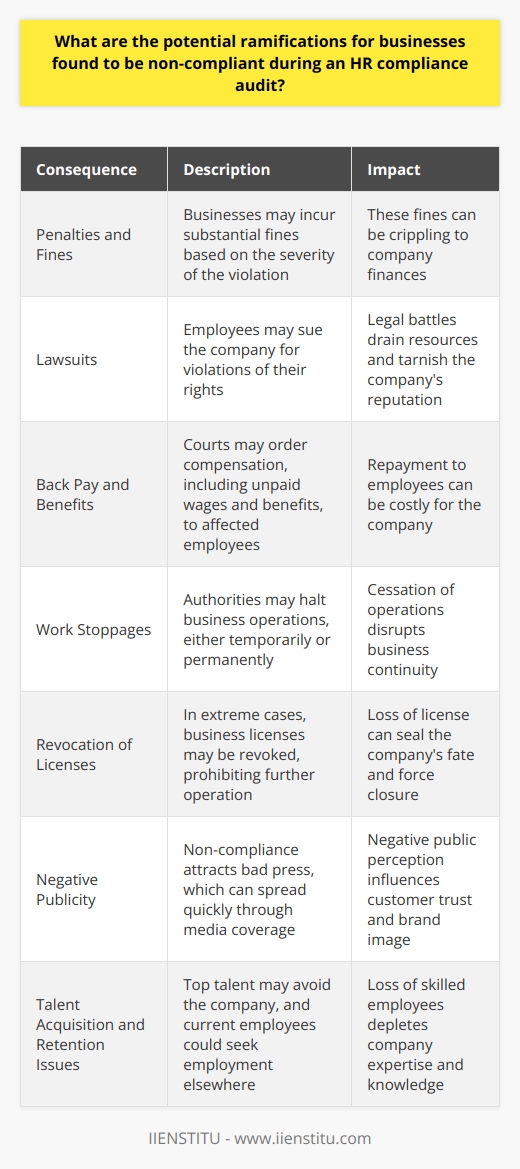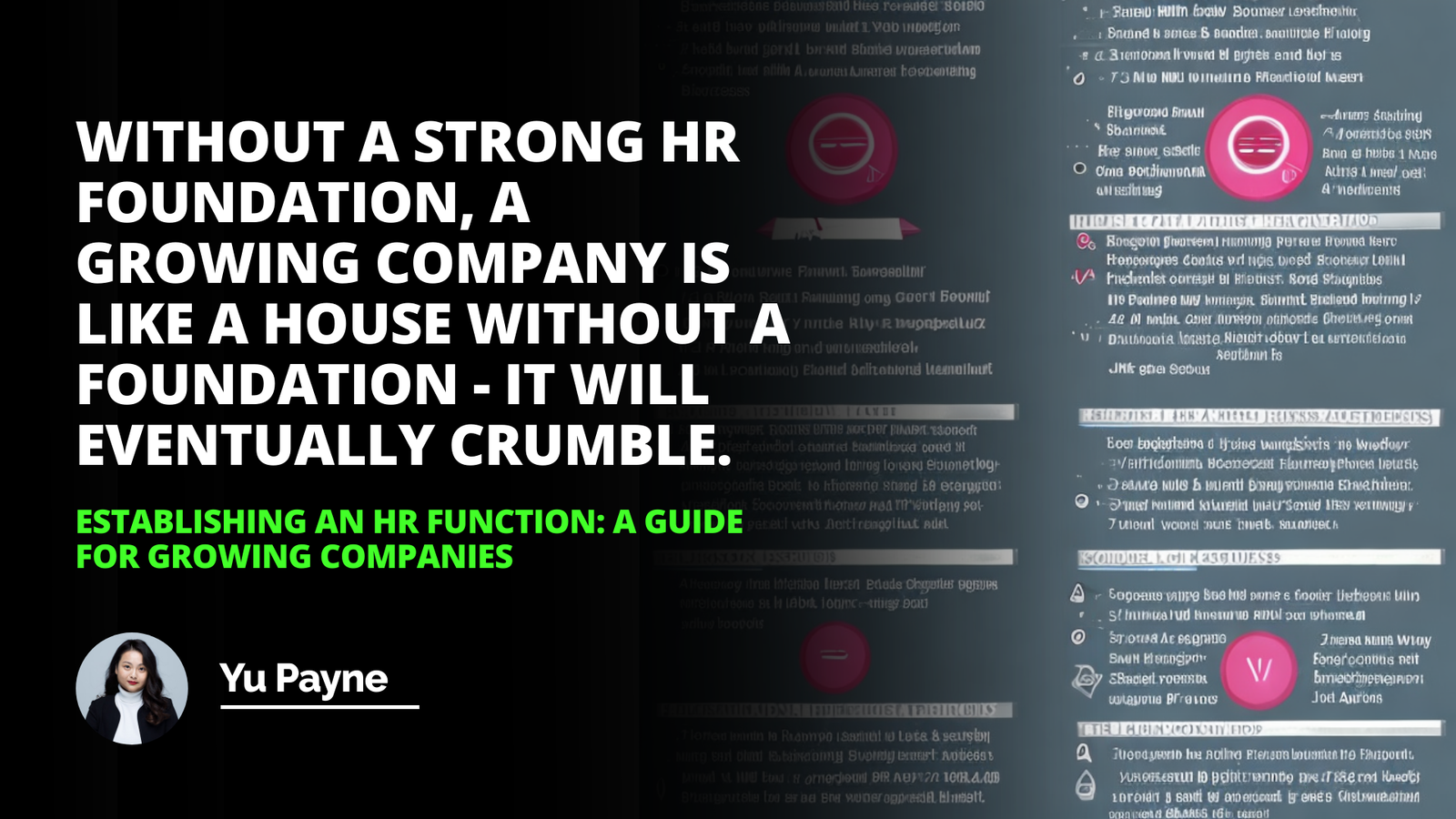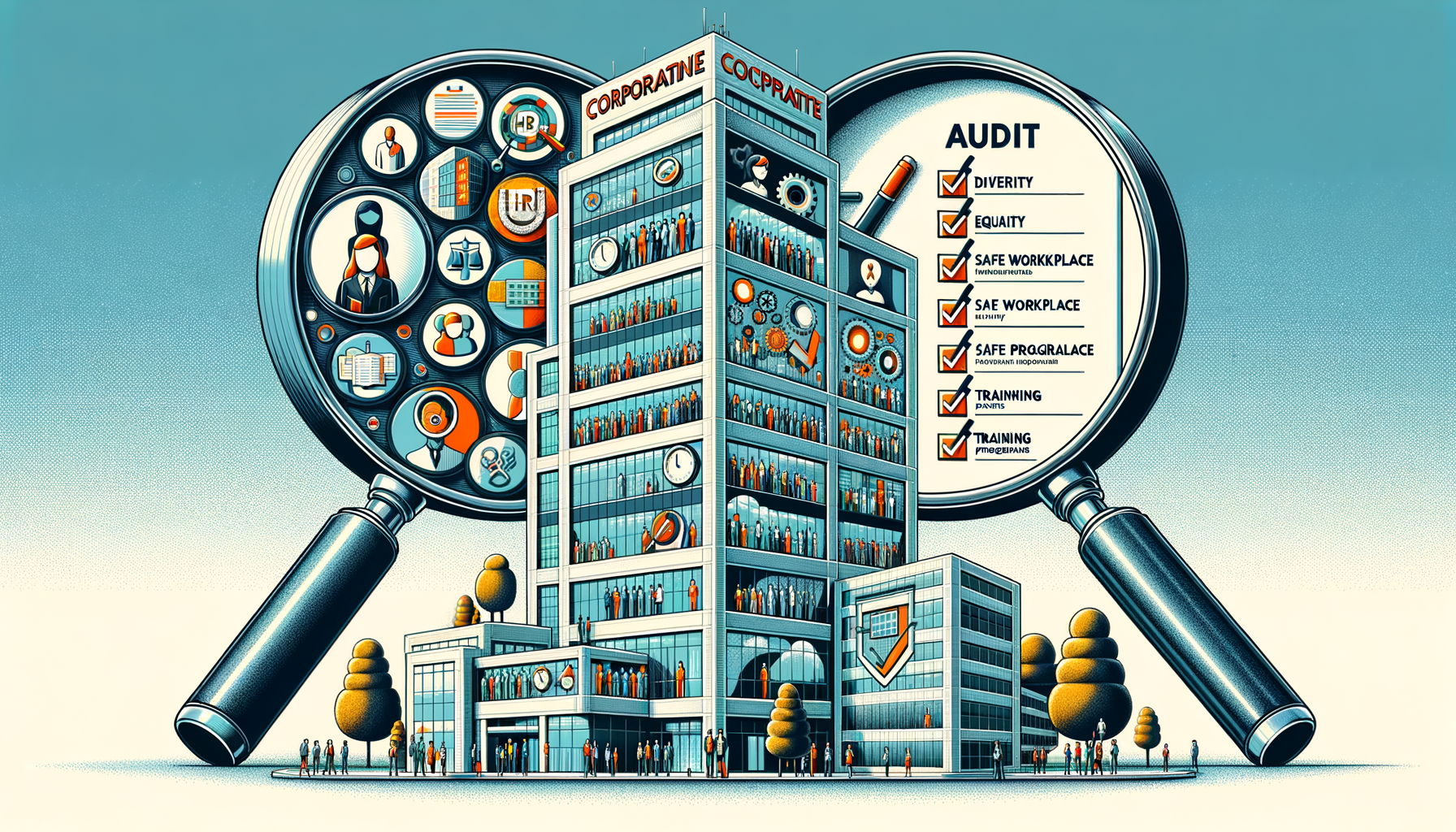
In today's business environment, ensuring compliance with employment laws is more than just a legal obligation—it's a cornerstone of ethical business practices. An HR compliance audit plays a vital role in this. It’s a rigorous process that examines whether a company's HR policies, practices, and systems align with relevant employment laws. These laws range from wage and hour regulations to workplace safety standards and anti-discrimination statutes. Through these audits, businesses can avoid costly legal pitfalls while fostering a fair and efficient workplace. This article dives deep into the HR compliance audit process, from preparation to post-audit actions, providing a comprehensive roadmap for businesses aiming to stay ahead in the compliance game.
What is HR Compliance?
HR compliance involves a company's adherence to the laws, regulations, and guidelines governing the employer-employee relationship. It encompasses a wide array of areas, including wage laws, anti-discrimination policies, employee benefits, health, and safety regulations. Staying compliant means ensuring that the policies are not just documented but are practiced consistently in everyday operations. An HR compliance audit is like a health check for your company's HR processes, identifying potential risks and opportunities for improvement.
I remember a time when I worked at a midsize tech company where we hadn't conducted a compliance audit for a few years. Things seemed fine on the surface, but once we brought in an external auditor, we discovered outdated practices that put us at risk, especially regarding classification of independent contractors. It was a wake-up call and taught me that proactivity in compliance is key. Ignoring this could have led to significant legal troubles and fines.
Why HR Compliance Audits Matter
An HR compliance audit is not just about avoiding legal issues—it's about ensuring fairness and transparency in how employees are treated. Here’s why these audits matter:
Risk Mitigation: Regular audits help identify potential compliance gaps, reducing the risk of costly litigation and penalties. For instance, failing to comply with wage and hour laws can lead to class-action lawsuits, which could cripple a business financially.
Building Trust: An audit ensures that the company's HR practices are transparent and fair, which helps in building trust with employees. It’s about fostering a workplace where employees feel secure, knowing that they are treated according to clear, lawful policies.
Operational Efficiency: By evaluating HR processes and policies, businesses can streamline their operations. For example, during an audit, a company might discover redundant processes that could be automated, saving both time and resources.
Imagine a situation where an audit uncovers discrepancies in how overtime is calculated across different departments. Resolving this not only prevents a potential legal headache but also leads to a more equitable workplace where employees are compensated correctly for their time.
Key Goals of an HR Compliance Audit
The objectives of an HR compliance audit are diverse, but they generally revolve around the following:
Legal Safeguarding: The primary goal is to ensure that the company complies with all relevant laws and regulations, thus avoiding legal action and fines.
Process Improvement: Audits often reveal inefficiencies in HR processes, prompting improvements that can align practices with best standards.
Equitable Treatment: A thorough audit ensures that HR practices treat all employees fairly, reducing the likelihood of discrimination or unfair treatment.
These goals align with corporate governance principles, where maintaining ethical and legal standards is key to long-term success. One company I worked with discovered through an audit that their performance review system was inconsistent, leading to perceptions of favoritism. Addressing this not only improved morale but also helped the company better align performance incentives with actual contributions.
Preparing for an HR Compliance Audit
Building a Comprehensive Checklist
Preparation for an HR compliance audit starts with a detailed checklist. This should cover every aspect of HR compliance, including:
Employee Classifications: Are employees correctly classified as exempt or non-exempt under wage and hour laws?
Hiring Practices: Do recruitment processes comply with equal opportunity and non-discrimination laws?
Employee Benefits: Are the benefits being offered compliant with the relevant regulations, like the Family and Medical Leave Act (FMLA)?
Creating such a checklist can feel daunting, especially for companies with complex structures. However, it's an essential step to ensure no compliance area is overlooked. A good practice is to tailor the checklist based on your industry’s specific regulations. For example, healthcare providers must pay special attention to HIPAA regulations, while construction companies need to focus on OSHA safety standards.
Assembling the Audit Team
A successful audit relies on a well-rounded team. Typically, this includes:
HR Professionals: Individuals who understand the company's policies inside out.
Legal Advisors: Lawyers who specialize in employment law can provide a legal perspective.
External Auditors: Sometimes, an outside perspective is invaluable, offering insights into potential blind spots.
In my experience, having an external auditor, while more costly, often provides a level of objectivity that internal teams might miss. An external auditor can challenge assumptions and dig deeper into practices that might be too familiar to internal teams.
Documentation Review and Gathering
Collecting the right documentation is crucial for a successful audit. This includes:
Personnel Files: These should be complete and include documentation of performance appraisals, disciplinary actions, and employee contracts.
Policy Documents: Current versions of handbooks, training materials, and policy statements.
Training Records: Evidence of compliance training, especially on topics like anti-harassment.
Having seen how critical this step is, I always recommend keeping records organized and accessible. During one audit, we realized we had misplaced some older employee files, which made the process unnecessarily stressful. A well-organized digital system could have saved us a lot of time and trouble.
Core Areas to Focus on During the Audit
1. Employee Records Management
Employee records management is often one of the trickiest aspects to audit. It's not just about compliance with data protection laws like GDPR or CCPA, but also ensuring that all necessary records are kept up-to-date and secure. The audit should assess:
Accuracy: Are the records accurate, reflecting the latest role and salary changes?
Confidentiality: Are there measures to ensure the confidentiality of sensitive information?
2. Recruitment Practices
The audit should closely examine how the company handles recruitment to ensure non-discriminatory practices. This includes:
Job Descriptions and Advertisements: Do they comply with non-discrimination laws?
Interview Procedures: Are interviews conducted fairly, without any biases or unlawful questions?
Selection Criteria: Is the criteria for hiring consistently applied?
A colleague once shared how their company was flagged during an audit because job postings included language that could be interpreted as gender-specific. Updating this language helped them avoid further issues and improved their candidate pool’s diversity.
3. Compensation and Benefits Compliance
Pay and benefits are highly regulated, and even small mistakes can lead to significant problems. The audit should ensure:
Minimum Wage Compliance: Are all employees paid according to state and federal minimum wage requirements?
Consistent Benefit Distribution: Are benefits offered uniformly, without discrimination between employees?
Overtime Pay: Is overtime calculated accurately according to law?
Conducting the Audit: Step-by-Step Guide
Step 1: Review the Legal Framework
Understanding the current legal landscape is crucial before diving into the audit. Different states and countries have their own regulations, and staying up-to-date is essential. For example, California's labor laws are often more stringent than federal requirements, making it important for companies in the state to tailor their audits accordingly.
Step 2: Compare Policies with Practice
This involves comparing written policies with what actually happens on the ground. It’s common to find discrepancies here. For instance, a written anti-harassment policy may not align with how complaints are handled practically.
Step 3: Leverage Audit Software
Today, audit software can be a game-changer. It allows for:
Automation of Routine Checks: This saves time on repetitive tasks.
Centralized Record Keeping: Storing all audit findings in one place makes it easier to track progress.
Real-Time Reporting: This allows the HR team to act swiftly on any compliance issues uncovered during the audit.
One company I know invested in a digital audit platform and saw a 30% reduction in the time spent on audits. It also improved accuracy, catching mistakes that might have slipped through a manual review.
Post-Audit: Turning Findings into Action
Analyzing the Data
After the audit, the real work begins. Analyzing the findings involves understanding where the company stands on compliance and identifying risk areas. This analysis can reveal critical insights, like whether a lack of training is leading to repeated compliance violations.
Reporting to Stakeholders
Reporting is not just about presenting the issues found—it's about offering a plan for moving forward. A clear, actionable report can help management understand the urgency and allocate resources for improvements.
Creating an Action Plan
A well-defined action plan is essential to address non-compliance areas. It should include:
Detailed Steps: Specific actions to address each compliance gap.
Timeline: When each action should be completed.
Assigned Responsibilities: Who will be in charge of each step?
The Role of Technology in HR Compliance Audits
How Technology Enhances Risk Management
Modern HR audit tools often come equipped with risk management features. These tools can predict potential compliance issues using data analytics, enabling HR teams to take action before issues become serious.
Increasing Audit Efficiency
Automated systems streamline tasks like data collection and report generation, making audits less burdensome. This allows HR teams to focus on strategic improvements rather than getting bogged down by paperwork.
Overcoming Common Challenges in HR Compliance Audits
Addressing Staff Resistance
Resistance from employees during audits is common, as many fear scrutiny. Transparency is key. Letting employees know that the audit aims to improve processes for everyone's benefit can ease tensions.
Bridging the Gap Between Policy and Practice
Auditors often find that what's written in the policy documents doesn’t align with day-to-day practices. Closing this gap requires ongoing training and open dialogue between HR and other departments.
When to Seek External Help
Sometimes, the complexity of regulations requires outside expertise. Bringing in a specialist can be a good move when the stakes are high, such as when entering a new market with unfamiliar labor laws.
Case Study: A Real-Life Example of a Successful HR Compliance Audit
A mid-sized healthcare company found itself struggling with high employee turnover. During a routine HR compliance audit, they uncovered issues with job classification—many staff were incorrectly classified as independent contractors rather than employees. This mistake, if left unaddressed, could have resulted in significant fines. The audit led to a reclassification of employees and adjustments in pay structures. As a result, they not only improved compliance but also saw an increase in employee satisfaction.
Key Lessons:
Being proactive in conducting audits can prevent future legal risks.
Integrating audit findings into a continuous improvement strategy can lead to long-term gains.
Open communication with employees about changes helps in fostering trust and cooperation.
Embrace HR Compliance Audits as a Growth Tool
The significance of HR compliance audits extends beyond legal safety. They can be a strategic tool for growth, improving operational efficiency, employee satisfaction, and trust in leadership. By committing to regular audits, businesses can build a robust HR foundation that adapts to changing laws and workplace expectations.
In the end, remember that compliance is a journey, not a destination. As regulations evolve, so must your approach to HR audits. Whether you're a small startup or a large enterprise, staying diligent with HR compliance audits will help you build a workplace where everyone can thrive.
References
"Employment Law for Business" by Dawn D. Bennett-Alexander and Laura P. Hartman
Society for Human Resource Management (SHRM) articles on compliance practices
U.S. Department of Labor website (https://www.dol.gov/)
“HR Audits: Evaluating the Risk Management Process” by the American Management Association
Frequently Asked Questions
What are the primary areas of focus during an HR compliance audit?
HR Compliance Audit: Key Areas of Focus
When conducting an HR compliance audit, meticulous attention to various regulations is vital. These audits ensure that an organization adheres to a myriad of laws and industry standards. They are also crucial for mitigating risks associated with non-compliance. Below are the primary areas auditors focus on during the process.
Employment Records and Information Management
Accurate record-keeping forms the backbone of HR compliance. Auditors evaluate the management of employee records. They ensure documentation for hires, promotions, transfers, and terminations is correct. Attention to detail is paramount. Auditors check for complete I-9 forms and proper storage of sensitive information.
Wage and Hour Laws Compliance
Fair compensation practices are essential. Auditors examine adherence to the Fair Labor Standards Act (FLSA). They scrutinize timekeeping records and payroll data. It is critical to verify that employees receive at least the minimum wage. Overtime payment practices must also comply with legal standards.
Benefit Plans and Retirement Policies
Auditors review employee benefit plans, assessing compliance with relevant laws. This includes the Employee Retirement Income Security Act (ERISA). All plan documents undergo a thorough examination. The goal is to ensure both transparency and fairness in benefit distribution.
Health and Safety Regulations
Workplace safety is a top concern. The Occupational Safety and Health Administration (OSHA) guidelines take precedence here. Auditors inspect records of workplace incidents and safety training activities. They look for evidence of proactive measures to prevent accidents and injuries.
Equal Employment Opportunity
Non-discrimination is essential in the workplace. Auditors check for compliance with the Equal Employment Opportunity Commission (EEOC) regulations. They assess hiring practices, promotions, and disciplinary actions. The intention is to affirm fair treatment of all employees, regardless of protected characteristics.
Leaves and Accommodations
Employers must comply with the Family and Medical Leave Act (FMLA) and the Americans with Disabilities Act (ADA). Auditors review policies and procedures related to employee leaves. They ascertain that accommodations for disabilities are appropriate and consistent.
Performance Management and Termination Practices
Auditors evaluate performance review systems and termination processes. It is key to ensure they align with established policies and laws. Fairness and consistency in these practices mitigate risks of legal claims.
Immigration Compliance
For organizations employing foreign nationals, auditors review visa and work authorization documentation. Adherence to Department of Labor (DOL) and Homeland Security regulations is non-negotiable.
HR Policy Handbook Review
A thorough review of the HR policy handbook is standard. Auditors confirm that all policies are up to date. They also check for universal accessibility to all employees. It’s key that policies reflect current laws and regulations.
In conclusion, HR compliance audits cover extensive ground. These audits protect both the employer and the workforce. Each focus area is integral to maintaining legal compliance and fostering a fair, safe, and ethical work environment.
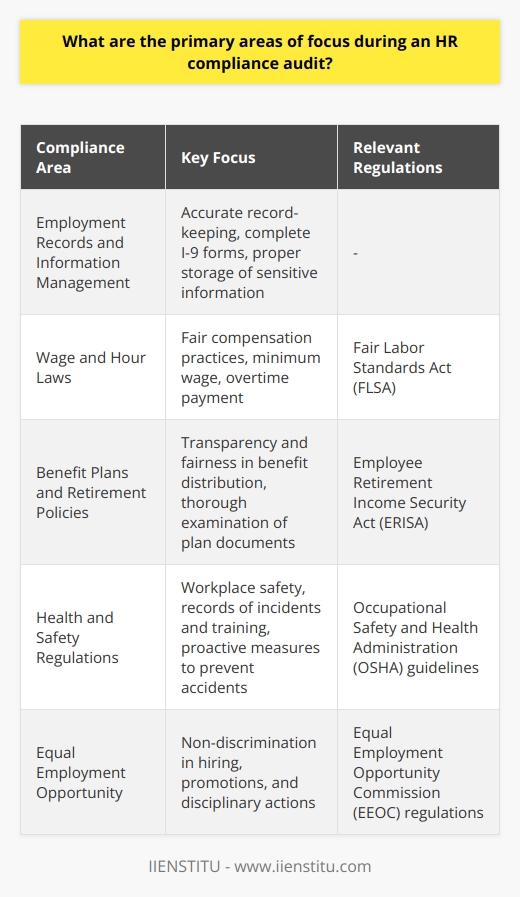
How can businesses effectively prepare for an HR compliance audit?
Understanding HR Compliance Audits
HR compliance audits assess if a firm adheres to pertinent laws. They also ensure that internal policies align with legal standards. These audits help reduce legal liabilities. Companies must handle them with utmost attention.
Gather Relevant Information
Start by collecting all necessary employee records. These include contracts and policy acknowledgments. Review current HR policies and procedures. Update them to meet the latest legal requirements. Documentation should be thorough and accessible.
Know the Compliance Requirements
Ensure familiarity with employment laws. Compliance standards often change. Stay current with updates. Employ professionals who specialize in employment legislation.
Educate Management and Employees
Education forms the cornerstone of preparation. Train all staff on relevant policies. Regular training sessions ensure ongoing compliance. Managers must understand their role in upholding standards.
Conduct Self-Audits Regularly
Self-audits identify issues before official audits do. Encourage department-level audits regularly. Use these to correct non-compliance. They prepare everyone for external audits.
Develop a Compliance Calendar
Implement a compliance calendar. Mark critical dates for law changes and reporting deadlines. This tool will help manage compliance obligations systematically.
Establish Strong Record-Keeping Practices
Robust record-keeping is non-negotiable. Maintain records pertaining to wages, hours, and employee data. Digital records have become standard. Ensure these are secure and backed up.
Ensure Policy Awareness and Acknowledgment
Employees must understand the policies. Distribute handbooks and obtain signed acknowledgments. Regularly remind staff of critical policies and procedures.
Focus on Data Security
Data privacy laws impact HR compliance. Protect all employee data. Encrypt sensitive information. Train employees on data security protocols.
Prepare for the Unexpected
Plan for possible audit outcomes. Draft responses to potential non-compliance issues. This speeds up the resolution process.
Keep Communication Open
Open dialogue assists in preempting issues. Encourage employees to communicate concerns.
Conclusion
Proactive preparation defines audit success. Follow these steps diligently. They greatly improve audit outcomes. Keeping up with HR compliance requires effort. That effort guards against disruptive legal repercussions.
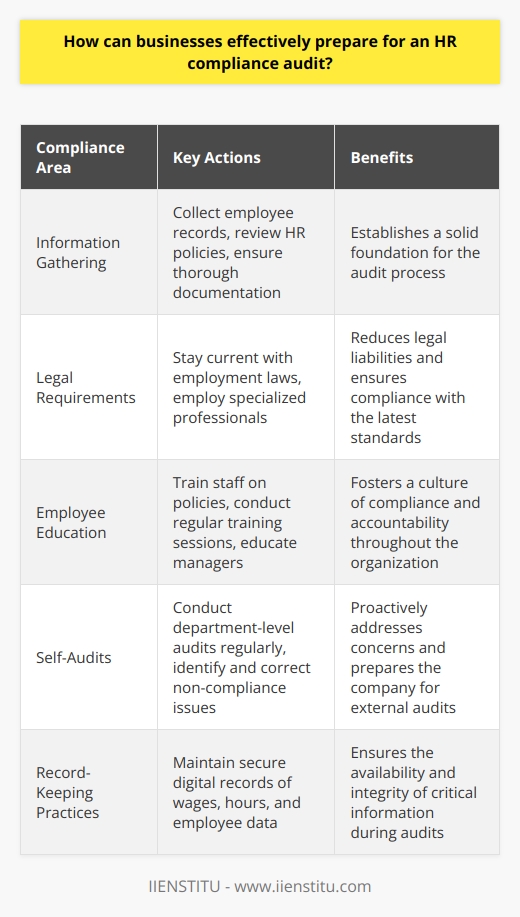
What are the potential ramifications for businesses found to be non-compliant during an HR compliance audit?
Consequences of Non-Compliance in HR Audits
During HR compliance audits, companies face scrutiny. Auditors check for adherence to laws and regulations. They focus on employment, labor, and immigration rules. Non-compliance can lead to severe outcomes.
Legal and Financial Repercussions
Penalties and Fines: Businesses may incur hefty fines. These vary by violation severity. They can be substantial, crippling company finances.
Lawsuits: Employees may sue for rights violations. Such legal battles drain resources. They also tarnish the company's reputation.
Back Pay and Benefits: Courts may order compensation. This repayment to affected employees is costly. It includes unpaid wages and benefits.
Operational Impacts
Work stoppages: Authorities may halt operations. This cessation can be temporary or permanent. It disrupts business continuity.
Increased Scrutiny: Authorities may impose monitoring. This oversight ensures future compliance. It involves regular check-ins and reports.
Revocation of Licenses: In extreme cases, licenses may be revoked. This prohibits business operation. It can seal the company's fate.
Reputation and Brand Image
Negative Publicity: Non-compliance attracts bad press. Media coverage can spread quickly. It influences public perception negatively.
Customer Distrust: Customers may lose faith in the brand. This loss creates a decline in sales. It also affects customer loyalty.
Talent Acquisition and Retention Issues: Top talent may avoid the company. Current employees could seek employment elsewhere. This shift depletes company skill and knowledge.
Strategies to Avoid Non-Compliance
Training and Education: Companies should invest in compliance programs. Training improves staff awareness. Education reduces the risk of infractions.
Regular Audits: Conduct internal audits regularly. This action helps identify potential issues. It allows for prompt correction.
Compliance Officers: Appoint compliance professionals. They ensure adherence to legal standards. They serve as a safeguard against violations.
In conclusion, businesses should prioritize compliance. The ramifications of non-compliance are severe. They span from legal action to brand damage. Mitigation involves proactive measures. These include training, regular audits, and dedicated personnel. Adherence to guidelines preserves company integrity and longevity.
